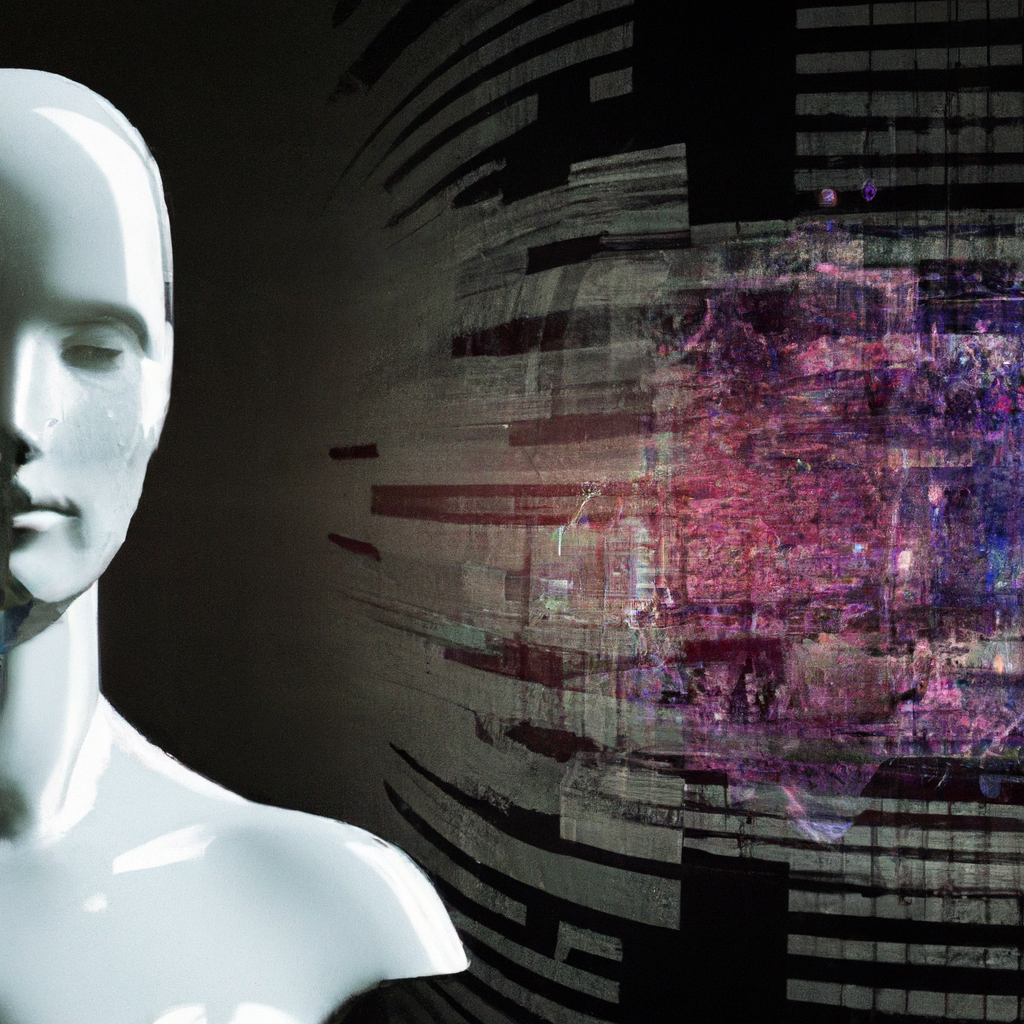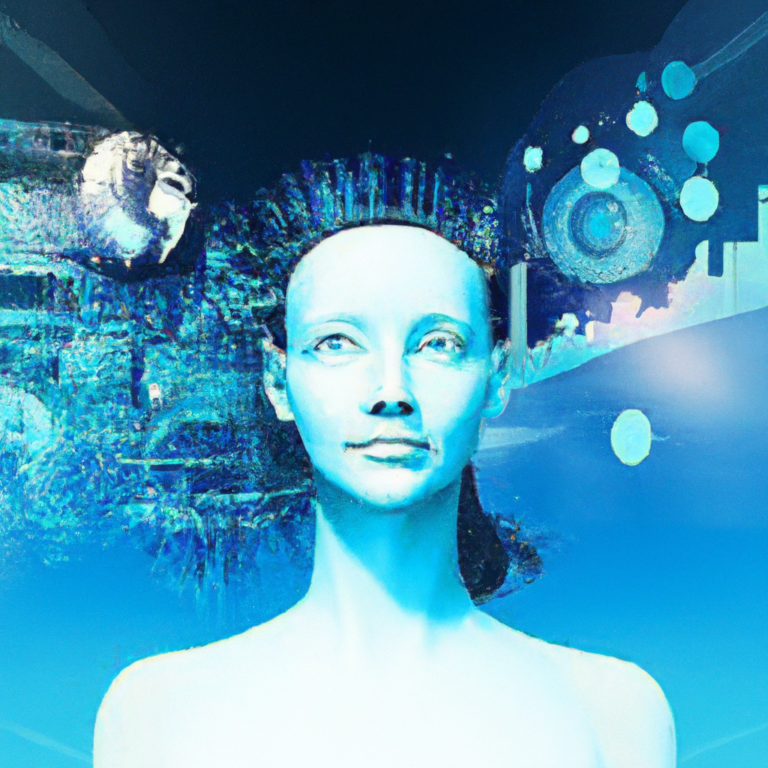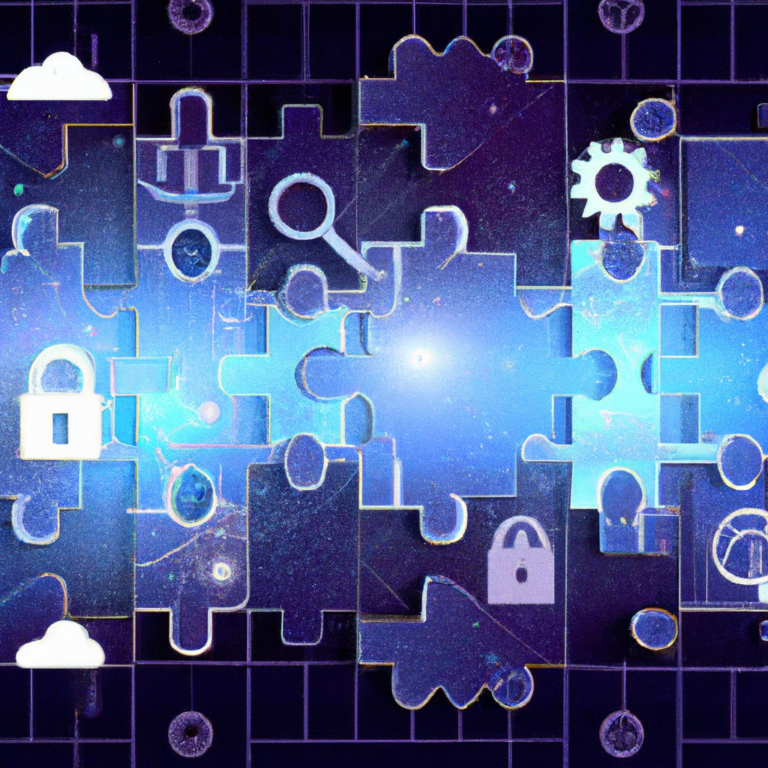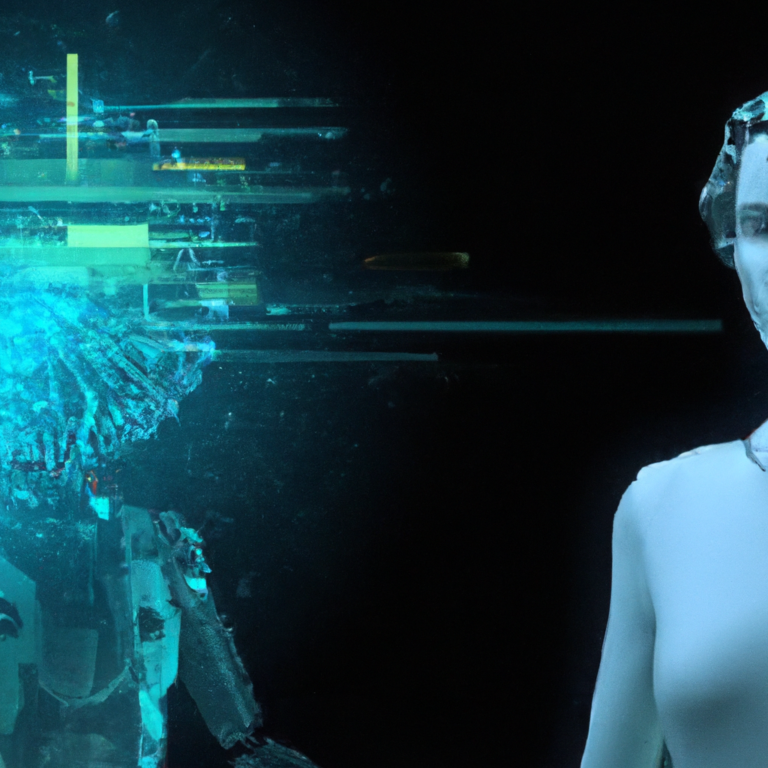The Future Of Work In The Age Of AI

In the age of AI, the future of work is being reshaped. From industries to daily tasks, the integration of artificial intelligence is revolutionizing the way we work. This article explores the impact of AI on the workforce, discussing how it enhances productivity, creates new job opportunities, and offers exciting possibilities for collaboration. As we embark on this journey into the future, it’s important to understand the evolving landscape and embrace the potential that AI holds in shaping a more efficient and innovative world of work.

AI in the Workplace
Artificial Intelligence (AI) has transformed various aspects of our lives, and its impact on the workplace is no exception. AI is revolutionizing the way we work, and understanding its implications is crucial for individuals, organizations, and societies as a whole.
Impact of AI on Jobs
One of the primary concerns surrounding the integration of AI into the workforce is its potential impact on jobs. While it is true that AI has the capability to automate certain tasks traditionally performed by humans, it is important to view this change as an opportunity rather than a threat. AI-driven automation can streamline processes, increase efficiency, and free up valuable time for human workers to focus on more complex and creative endeavors.
Automation of Tasks
AI has the potential to automate routine and repetitive tasks across various industries. This can lead to increased productivity and reduced human error. Tasks such as data analysis, document processing, and customer support can be effectively handled by AI systems, allowing employees to leverage their skills in more strategic areas. By automating mundane tasks, AI enables workers to dedicate their time and energy to more intellectually stimulating and innovative work.
Development of New Job Roles
While AI has the potential to automate certain tasks, it also creates new job opportunities. As AI systems continue to evolve, there is a growing demand for professionals skilled in designing, developing, and maintaining AI technologies. These new job roles include AI specialists, data scientists, and machine learning engineers. The development and implementation of AI require a diverse set of skills, and individuals who possess a combination of technical expertise and creativity will be at the forefront of this emerging field.
The Changing Skills Landscape
The integration of AI into the workplace also brings about a shift in the skills landscape. New technologies require individuals to adapt and acquire a blend of technical and soft skills to thrive in the future of work.
Demand for Technical Skills
The rise of AI necessitates a higher demand for technical skills. Proficiency in programming languages, data analysis, and machine learning algorithms are becoming essential in various industries. Individuals with a strong foundation in technology will be well-positioned to take advantage of the opportunities created by the integration of AI into the workforce.
Importance of Soft Skills
While technical skills are essential, the importance of soft skills should not be overlooked. In an AI-driven workplace, interpersonal communication, critical thinking, and problem-solving skills become increasingly valuable. The ability to collaborate effectively with AI systems and fellow human workers is essential for success.
Upskilling and Reskilling
In order to adapt to the changing skills landscape, individuals and organizations must prioritize upskilling and reskilling efforts. Lifelong learning is now more important than ever. Upskilling refers to acquiring new skills that are relevant to emerging technologies, while reskilling involves updating existing skills to remain relevant in the evolving job market. Continuous learning and development initiatives, both at an individual and organizational level, are crucial for staying competitive in the age of AI.
Collaboration between Humans and AI
As AI becomes more integrated into the workplace, collaboration between humans and AI systems is becoming increasingly common.
AI as a Tool for Human Workers
AI systems are not meant to replace human workers, but rather to augment their capabilities. By leveraging AI as a tool, human workers can enhance their productivity and efficiency. AI systems can assist in data analysis, provide real-time insights, and automate repetitive tasks. This collaboration between humans and AI enables workers to focus on higher-level decision-making, critical thinking, and creativity.
Enhancing Productivity through Collaboration
The collaboration between humans and AI has the potential to greatly enhance productivity in the workplace. AI systems can handle massive amounts of data quickly and accurately, freeing up valuable time for human workers. As a result, organizations can operate more efficiently, make data-driven decisions, and achieve better outcomes.

New Workforce Dynamics
The integration of AI into the workplace is reshaping workforce dynamics and revolutionizing how people work.
Remote Work and Virtual Teams
AI has made remote work and virtual teams more viable. With the help of AI-driven collaboration tools, teams can effectively communicate, collaborate, and share information regardless of their physical locations. This flexibility allows organizations to tap into a global talent pool, enhance work-life balance for employees, and reduce costs associated with physical workplaces.
Flexible Work Arrangements
AI-powered technologies enable flexible work arrangements that cater to individual preferences and needs. For instance, employees can personalize their work hours, working remotely or in the office as needed. This flexibility fosters a better work-life balance, increases job satisfaction, and ultimately improves productivity.
Gig Economy and Freelancing
AI has also fueled the growth of the gig economy and freelancing. With the rise of AI-driven platforms, individuals can leverage their skills and expertise to offer services and work on a project basis. This opens up new avenues for income generation and provides individuals with the opportunity to diversify their professional experiences.
Ethical Considerations
While AI brings transformative potential to the workplace, it also raises ethical considerations that must be addressed.
Bias in AI Systems
AI systems are only as unbiased as the data they are trained on. Biases present in training data can be inadvertently transferred to AI systems, perpetuating existing inequalities and injustices. It is essential to actively address and mitigate biases in AI systems to ensure fairness and equality in the workplace.
Privacy and Security Concerns
With AI comes the collection and analysis of vast amounts of data. Organizations must prioritize privacy and security to protect sensitive information. Policies and regulations should be in place to safeguard personal data and prevent unauthorized access.
Fairness and Transparency
The decisions made by AI systems must be fair and transparent. It is important to understand and validate the algorithms and processes utilized by AI systems to ensure that they are not inadvertently discriminating against certain individuals or groups. Transparency in AI technology fosters trust among users and helps mitigate potential negative impacts.
Impact on Industries
AI has the potential to revolutionize various industries and reshape the way they operate.
Healthcare and Medical Field
In the healthcare industry, AI has the potential to improve diagnostics, streamline administrative tasks, and enhance patient care. AI-powered algorithms can analyze medical data and provide real-time insights, leading to more accurate diagnoses and personalized treatment plans. Additionally, AI-based chatbots can support patient interactions, offer initial triage, and provide essential information.
Education and Training
AI can revolutionize education and training by offering personalized learning experiences. Adaptive learning platforms powered by AI can identify individual student strengths and weaknesses, tailor instructional materials, and provide targeted feedback. Virtual reality (VR) and augmented reality (AR) technologies, coupled with AI, can create immersive and interactive learning environments, enhancing engagement and knowledge retention.
Customer Service and Support
AI is transforming customer service and support by providing efficient and personalized experiences. Virtual assistants and chatbots powered by AI can handle customer inquiries promptly, reducing wait times and improving customer satisfaction. AI can analyze customer data to provide personalized product recommendations and anticipate customer needs, enhancing the overall customer experience.
The Role of Government and Policy
Government and policy play a crucial role in shaping the impact of AI on the workforce and society at large.
Regulation and Guidelines
Governments should establish clear regulations and guidelines to ensure the ethical and responsible use of AI. These regulations should address issues such as data privacy, algorithmic transparency, and accountability. By providing a regulatory framework, governments can foster trust, protect citizens’ rights, and promote responsible AI adoption.
Supporting Innovation and Research
Governments should prioritize funding and support for AI research and development. By investing in innovation, governments can drive technological advancements, nurture the growth of AI startups, and create an ecosystem conducive to AI-driven economic growth. Collaboration between government, academia, and industry is essential to harness the full potential of AI.
Ensuring Job Transition Support
With the integration of AI in the workforce, job displacement may occur in certain industries. Governments should implement policies and programs to support those affected by technological disruptions. Job transition support, such as training programs, career counseling, and financial assistance, can help individuals adapt to the changing job market and secure new employment opportunities.
Embracing Change and Adaptation
As AI transforms the future of work, it is important for individuals and organizations to embrace change and adapt accordingly.
Cultivating a Learning Culture
Organizations should foster a learning culture that encourages continuous learning and upskilling. By providing training opportunities and resources, organizations can empower employees to keep pace with technological advancements and adapt to changing job requirements. In turn, this cultivates a highly skilled workforce that is better equipped to navigate the AI-driven workplace.
Promoting Entrepreneurship and Innovation
AI opens up new possibilities for entrepreneurship and innovation. Organizations and governments should promote an entrepreneurial ecosystem that supports AI-driven startups and encourages innovation. By nurturing entrepreneurial mindsets and providing adequate support, individuals and organizations can leverage AI as a catalyst for positive change and economic growth.
Embracing AI as a Catalyst for Positive Change
Rather than fearing the impact of AI, individuals and organizations should embrace it as a catalyst for positive change. AI has the potential to enhance productivity, enable new opportunities, and improve the quality of work life. By leveraging the strengths of AI, individuals and organizations can create a future where humans and machines work together to achieve greater outcomes.
Creating Opportunities for All
As we navigate through the age of AI, it is essential to create inclusive opportunities that benefit everyone in society.
Addressing Inequality and Job Displacement
The integration of AI should be accompanied by efforts to address inequality and job displacement. Governments, organizations, and educational institutions should collaborate to provide equal access to AI education and training programs. By ensuring that diverse populations have the opportunity to develop the skills needed in the AI-driven workplace, we can mitigate potential inequalities and promote social and economic inclusivity.
Promoting Diversity and Inclusion
Diversity and inclusion must be prioritized in the age of AI. By embracing diverse perspectives and backgrounds, organizations can foster creativity, innovation, and empathy. AI technologies should be designed with diversity and inclusion in mind to avoid reinforcing existing biases and exclusionary practices. By promoting diversity and inclusion, we can harness the full potential of AI and create a more equitable future.
Building a Sustainable Future
As AI continues to reshape the way we work, sustainability should be at the forefront of our efforts. Organizations should prioritize environmentally friendly practices and leverage AI to drive sustainability initiatives. For example, AI-powered energy management systems can optimize energy consumption, reduce waste, and promote sustainable operations. By integrating sustainability into AI-driven practices, we can build a more environmentally conscious future of work.
Preparing for the Future
To thrive in the age of AI, individuals and organizations must actively prepare for the future of work.
Education and Training Programs
Education and training programs must adapt to the changing demands of the workforce. Curricula should incorporate AI-related courses and provide hands-on experience with AI technologies. By equipping individuals with the necessary skills and knowledge, education and training programs can prepare them for the AI-driven workplace.
Collaboration between Industry and Academia
Close collaboration between industry and academia is crucial in preparing for the future. By working together, industry and academia can identify emerging trends, develop relevant curricula, and offer practical training opportunities. This collaboration ensures that the skills taught in educational institutions align with the needs of the job market.
Continuous Learning and Development
The integration of AI into the workplace necessitates a shift towards continuous learning and development. Lifelong learning should become a cornerstone of the workforce, with individuals and organizations embracing a growth mindset. Continuous learning allows individuals to adapt to evolving technologies, acquire new skills, and remain competitive in the ever-changing job market.
In conclusion, the future of work in the age of AI presents both opportunities and challenges. By understanding the impact of AI on jobs, embracing the changing skills landscape, promoting collaboration between humans and AI, adapting to new workforce dynamics, addressing ethical considerations, and leveraging AI’s potential across industries, we can navigate this transformative era successfully. Governments, organizations, and individuals must work together to create opportunities for all, prepare for the future, and embrace AI as a catalyst for positive change. With the right mindset, skills, and policies in place, we can create a future where humans and AI systems collaborate harmoniously, leading to a more efficient, inclusive, and sustainable workforce.






